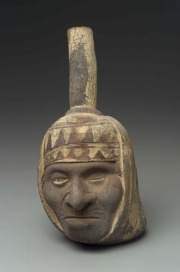Crazing
Description
Numerous, irregular, hairline cracks that may occur in ceramic glaze, paint, adhesive, concrete, parchment, or lacquer. Crazing may be due to nonuniform shrinkage on drying or cooling. It may also occur due to stress or inherent defects in the material. In varnishes, crazing may occur as the film becomes brittle. Crazed surfaces may have microscopic size cracks that produce a white hazy appearance.
Additional Information
º For information on cracks caused by humidity and temperature see: M.F. Mecklenburg, Smithsonian Museum Conservation Institute, "Determining the Acceptable Ranges of Relative Humidity And Temperature in Museums and Galleries" http://www.si.edu/mci/downloads/reports/Mecklenburg-Part1-RH.pdf Part 1, Structural Response to Relative Humidity and http://www.si.edu/mci/downloads/reports/Mecklenburg-Part2-Temp.pdf Part 2, Structural Response to Temperature
Additional Images
Authority
- Ralph Mayer, A Dictionary of Art Terms and Techniques, Harper and Row Publishers, New York, 1969 (also 1945 printing)
- Theodore J. Reinhart, 'Glossary of Terms', Engineered Plastics, ASM International, 1988
- Matt Roberts, Don Etherington, Bookbinding and the Conservation of Books: a Dictionary of Descriptive Terminology, U.S. Government Printing Office, Washington DC, 1982
- Dictionary of Building Preservation, Ward Bucher, ed., John Wiley & Sons, Inc., New York City, 1996

